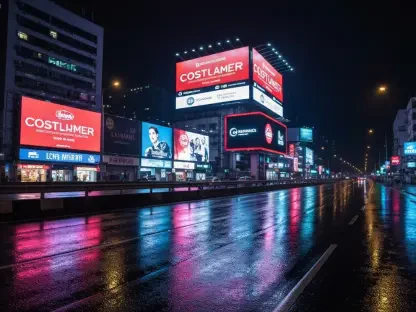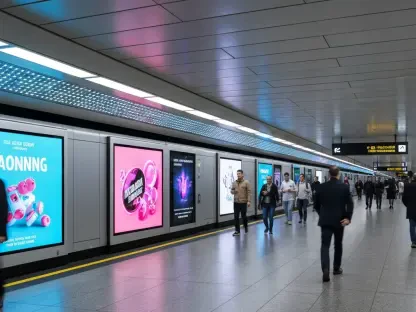Understanding the Importance of Timing in Social Media Strategy
In an era where billions of users scroll through social media daily, timing a post can mean the difference between viral success and digital obscurity, with studies showing that posts timed correctly can boost engagement by up to 30%. This critical aspect of digital marketing hinges on capturing audiences when they are most active, ensuring content doesn’t get buried in overcrowded feeds. For brands and marketers, mastering this element is not just a tactic but a cornerstone of building visibility and fostering meaningful interactions in a highly competitive landscape.
The current state of social media marketing reveals a complex ecosystem driven by sophisticated algorithms and ever-shifting user behaviors. Platforms prioritize content that garners immediate engagement, meaning a post’s initial performance often dictates its reach. With users inundated by content, aligning posts with peak activity windows has become essential to cut through the noise and secure a spot in followers’ feeds.
Data-driven insights are paramount in navigating this dynamic field, as evidenced by comprehensive analyses like those conducted by industry leaders examining over 1 million posts. Such studies underscore that timing isn’t a guessing game but a science, offering benchmarks that help marketers optimize their strategies. By leveraging these findings, businesses can transform raw data into actionable schedules that amplify their online presence.
Platform-Specific Optimal Posting Times
Detailed Breakdown by Platform
Navigating the best times to post requires a detailed look at each major platform, as user habits vary widely across Facebook, Instagram, X (Twitter), LinkedIn, TikTok, Threads, and Pinterest. For Facebook, engagement peaks at 9 AM on Tuesdays, aligning with morning routines when users check updates over breakfast or during commutes, while posting between midnight and 4 AM yields minimal interaction. Expert advice suggests targeting audience time zones for maximum impact, especially for global brands reaching diverse regions.
Instagram thrives between 3 PM and 9 PM on Mondays, with additional strong windows on Tuesdays from 5 AM to 8 AM and 3 PM to 7 PM, reflecting users’ leisure scrolling after work or school. Late-night hours, particularly midnight to 4 AM, consistently underperform. Specialists recommend that brands post early for professional content, while personal accounts may see better results in the evening, tailoring to industries like retail or entertainment that spike during downtime.
X (Twitter) sees optimal engagement from 9 AM to 11 AM on Wednesdays, Thursdays, and Fridays, driven by its role as a news hub where users seek updates during mid-morning breaks, with times before 5 AM proving least effective. Professionals advise syncing posts with real-time events or news cycles, avoiding major distractions like global sports events unless content ties directly to the moment. LinkedIn, catering to professionals, excels from 4 AM to 6 AM on Tuesdays and Wednesdays, capturing early risers before their workday, while evenings after 7 PM and weekends lag significantly; experts suggest morning text posts and afternoon videos to match evolving user patterns.
TikTok engagement surges from 7 AM to 11 AM on Thursdays, aligning with pre-work or break-time scrolling, whereas posts before 6 AM or after 11 PM often flop. Guidance highlights patience with the platform’s algorithm, which may delay content distribution by up to 24 hours, encouraging earlier posting to account for this lag. Threads, focusing on quick conversations, peaks at 8 AM on Tuesdays, with daily highs during transitions like midday breaks or weekend afternoons, while Pinterest performs best at 12 PM on Tuesdays and Fridays, tied to planning moments during lunch or weekend inspiration searches, with a tip to prioritize SEO in captions over strict timing.
General Trends and Engagement Patterns
Beyond specific windows, broader trends reveal distinct patterns across social media ecosystems, with mornings often favoring professional platforms like LinkedIn and X due to users’ workday check-ins. Afternoons and evenings, conversely, dominate leisure-focused spaces like Instagram and TikTok, as audiences unwind and seek entertainment or personal inspiration after daily obligations. These rhythms reflect how daily life stages influence digital behavior, providing a framework for strategic scheduling.
Mid-week days, notably Tuesdays and Wednesdays, frequently emerge as peak engagement periods across multiple platforms, likely due to users settling into weekly routines with higher availability to browse. This consistency offers a reliable starting point for marketers aiming to maximize visibility without over-relying on weekend or early-week fluctuations. Scheduling during these central days often yields stronger initial traction, setting content up for algorithmic boosts.
Looking ahead, these patterns may shift as user demographics evolve, with younger generations altering platform usage and new cultural habits emerging. Marketers must stay attuned to such changes, anticipating how global events or technological advancements might redefine peak times. Adapting to these potential shifts ensures that strategies remain relevant amid a constantly transforming digital sphere.
Key Factors Influencing Best Posting Times
Optimal posting windows are shaped by a variety of elements, starting with audience demographics such as age, location, and daily routines, which dictate when followers are most active. Industry nature also plays a pivotal role, as fitness brands might target early workout hours, while entertainment sectors focus on evening leisure. Competitor activity offers additional clues, suggesting when shared audiences engage, though unique timing tweaks can help stand out.
Platform algorithms further complicate the equation, rewarding posts that gain quick traction with greater visibility in crowded feeds, making alignment with peak hours critical. Time zones pose another challenge for global brands, requiring balanced scheduling to reach diverse regions effectively. Staying responsive to current events or trending topics can also elevate relevance, provided content matches the moment with appropriate tone and context.
To navigate these variables, leveraging analytics to uncover specific engagement patterns is essential, allowing for tailored approaches over generic guidelines. Balancing global reach with localized timing demands strategic tools to streamline efforts. Continuous monitoring and adjustment ensure that schedules align with both audience behavior and broader digital currents, maintaining effectiveness across campaigns.
Navigating Challenges in Social Media Timing
Determining universal best times remains elusive due to the vast diversity in audience behaviors and platform-specific nuances that defy one-size-fits-all solutions. What works for a professional network may fail on an entertainment-driven app, as user intent varies from information-seeking to casual browsing. This inherent variability necessitates a customized approach rather than blanket assumptions about peak periods.
Algorithmic changes add another layer of complexity, as platforms frequently update how content is prioritized, often without transparent notice, disrupting established schedules. Shifting user habits, influenced by societal trends or technological adoption, further complicate predictions, while the need for constant adaptation strains resources. These hurdles underscore the fluid nature of digital engagement, demanding vigilance from marketers.
Solutions lie in structured experimentation, such as testing varied posting times and analyzing outcomes to pinpoint effective windows. Regular strategy reviews, ideally biannual or following major platform updates, help keep tactics current. Utilizing scheduling tools can mitigate manual workload, automating posts for optimal times while freeing focus for content innovation, ensuring resilience amid ongoing challenges.
Tools and Strategies for Timing Optimization
Advanced tools play a crucial role in refining posting schedules, with features like personalized timing recommendations based on historical performance data offering precision. These solutions analyze engagement metrics over recent periods, suggesting tailored windows for platforms like Facebook, Instagram, and TikTok. By integrating such insights directly into content creation workflows, they simplify the scheduling process for busy marketers.
The benefits of data-driven decision-making extend beyond mere timing, enabling a deeper understanding of audience preferences and peak interaction moments. This approach reduces guesswork, allowing for efficient allocation of resources toward high-impact slots. As engagement data accumulates, these tools refine their accuracy, providing an evolving edge in a fast-paced environment.
However, timing optimization must complement broader content strategies, ensuring that quality and relevance remain paramount even at peak hours. Engaging storytelling or visually compelling posts amplify the effect of well-timed releases. Combining analytical scheduling with audience-centric content creation fosters a holistic approach, driving sustained interaction and brand loyalty.
Future Outlook for Social Media Timing
Emerging trends are poised to reshape posting dynamics, with real-time event alignment gaining traction as a way to boost content relevance during cultural or global moments. Tapping into viral topics or seasonal happenings can spike engagement, provided the approach feels authentic to the audience. This shift toward immediacy highlights the growing need for agility in digital planning.
Potential disruptors, such as the rise of new platforms or significant algorithm overhauls, could redefine established timing norms, requiring rapid strategic pivots. Changes in consumer preferences, driven by generational shifts or economic factors, may also alter when and how users engage online. Staying ahead of these developments demands proactive monitoring of industry signals and user feedback.
Innovation and analytics will remain central to navigating this landscape, with adaptive strategies ensuring relevance amid uncertainty. Harnessing cutting-edge tools to predict and respond to timing shifts offers a competitive advantage. As the digital realm evolves, flexibility in approach and commitment to data-informed adjustments will define success in maximizing social media impact.
Final Thoughts and Next Steps
Reflecting on the insights gathered, it becomes clear that pinpointing the best times to post across platforms demands a nuanced balance of data and customization. The exploration of specific windows, from early mornings on LinkedIn to late afternoons on Instagram, provides a roadmap for engagement that many marketers have previously overlooked. This deep dive into user behavior and algorithmic influences reveals timing as a powerful lever for visibility.
Moving forward, social media professionals should prioritize regular testing of posting schedules, using analytics to uncover hidden patterns unique to their audiences. Investing in robust scheduling tools can streamline this process, ensuring content lands at peak moments without draining resources. Staying adaptable to platform updates or cultural shifts is recognized as non-negotiable for sustained impact.
As a next step, integrating timing strategies with innovative content formats, like interactive polls or live streams, could further amplify reach during optimal windows. Collaboration across teams to align campaigns with trending moments is seen as a way to stay relevant. Embracing these actions promises to transform timing from a tactical concern into a strategic asset for digital growth.









